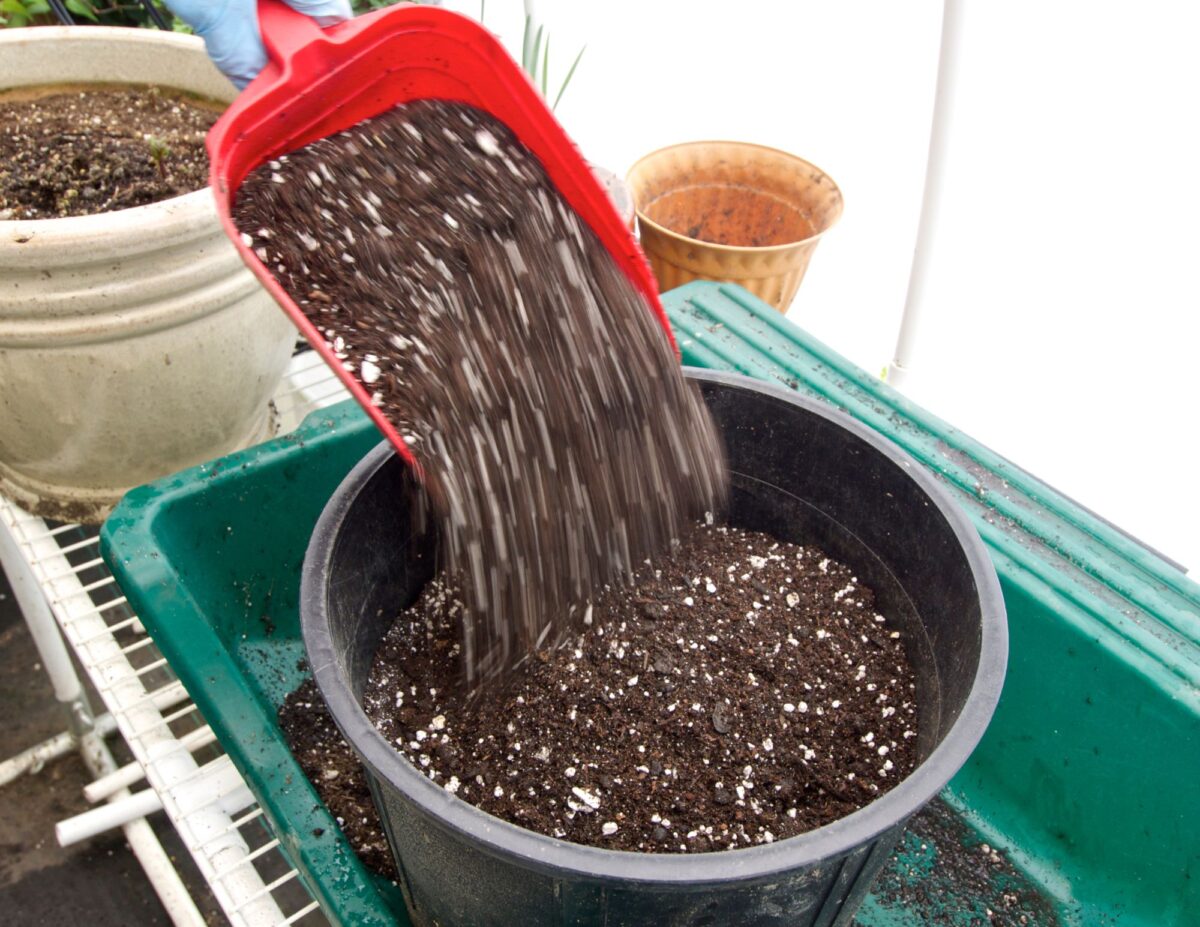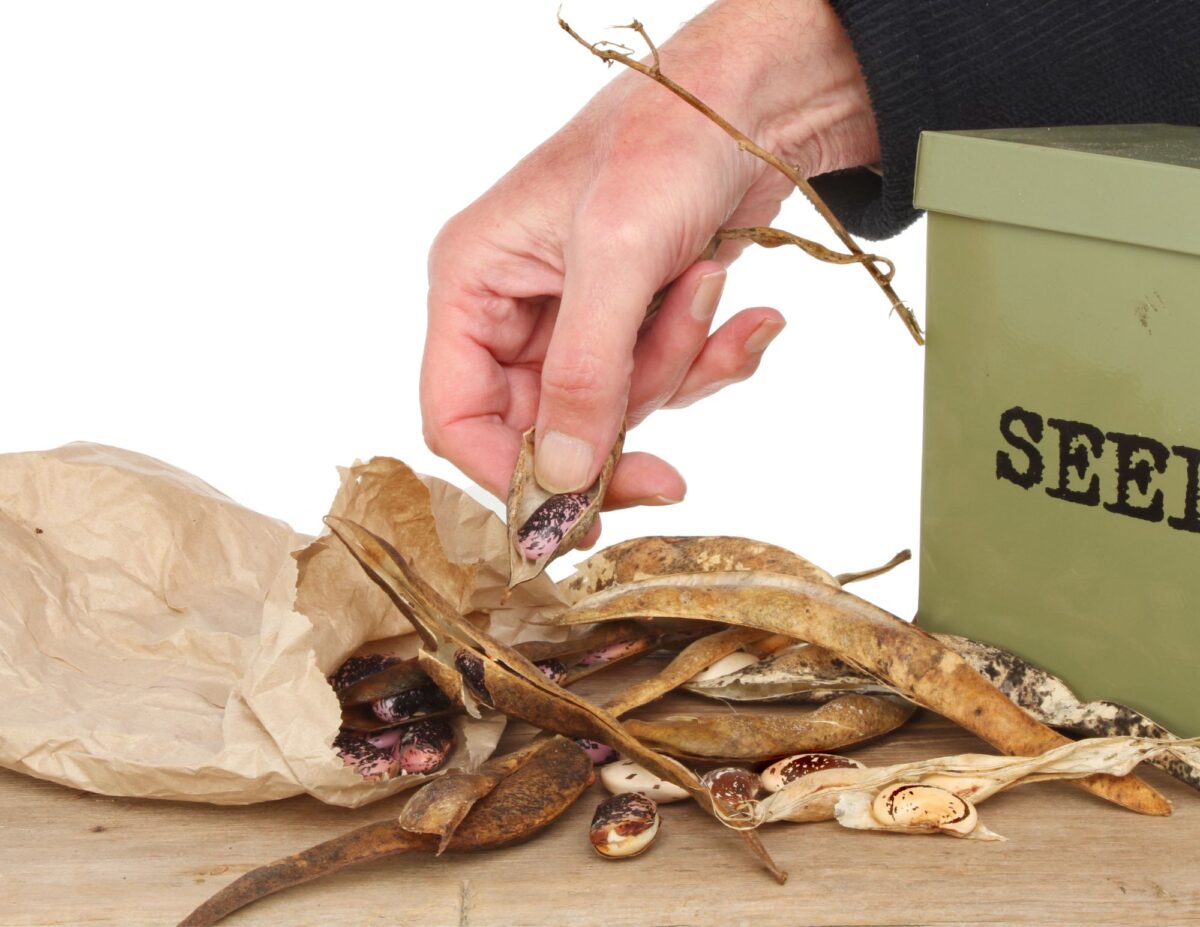Growing your own vegetable garden can save you hundreds of dollars every year. Whether you’re a beginner or an experienced gardener, there are plenty of frugal gardening tips that can help make the process easier and more fruitful, while at the same time helping you stay within budget.
From homemade compost to starting with seeds, my post about frugal gardening tips will give you lots of ideas on how to be successful in your frugal gardening efforts.
Benefits of Frugal Gardening Tips
Frugal gardening is a way of taking some simple cost-cutting measures that can save you money in the long run without sacrificing quality and yields.
Not only does this type of gardening help reduce costs, but it also allows us to reignite our connection with nature through thoughtful cultivation techniques. Read on to find out more about a budget-friendly approach to gardening.
Bookmark on Pinterest!
1) Start With Seeds
Gardening is a wonderful and relaxing hobby that yields fresh veggies and beautiful flowers. Even though using starter plants is an easy gardening shortcut, you’ll save money by starting seeds indoors and then transplanting them outdoors once they’ve had a chance to get established.
I start my seeds in starter sets and then transfer them to plastic cups when they get their first true leaves. True leaves are the leaves a plant gets after the initial two leaves, called cotyledons. True leaves display the characteristic appearance of the mature plant, unlike cotyledons which are part of the seed embryo.

You can use paper towel rolls or toilet paper rolls to make frugal seed starter containers, or you can buy peat pots that are inexpensive and can be planted directly in the ground.
Not only are seeds significantly cheaper, but they also give you more control over the growth and quality of your plants. Starting your plants from seeds also allows you to experiment with different varieties and find which ones thrive best in your specific environment.

Cost Savings of Starting Plants From Seeds
Seed packets are often much cheaper than individual seedlings, but you also can control the number of seeds you sow and grow. Plus, starting from seed means you can keep growing your plants year after year, reducing the need to constantly purchase new ones.

Additionally, there’s something truly satisfying about nurturing a tiny seed into a sprawling plant.
Tips on Starting Plants From Seeds
First and foremost, it’s important to choose seeds that are suited to your area. It’s also a good idea to opt for organic, non-GMO seeds that will produce healthy, thriving plants. Once you’ve made your selections, it’s then time to focus on germination.
Plant your seeds early in the spring as your ground warms up, and keep them well-watered and in a warm area. After that, when the seedling’s first leaves appear, you’ll want to thin them out so individual young plants will have enough space for growth.
This process involves providing the seeds with the right amount of moisture, light, and warmth to kick-start growth. As your seedlings begin to grow, it’s vital to keep tabs on their water and nutrient intake and to give them plenty of sunlight.
Later in the spring, transplant the plants you grew indoors out into prepared soil of your garden.

2) Composting
One of the best ways to reduce your gardening costs is through composting. Not only is it environmentally friendly, but it also provides a steady supply of rich, nutrient-dense soil for your plants.
By collecting your kitchen scraps and yard waste, you can create your own compost right at home, without having to spend money on expensive soil additives or fertilizers.

With a little patience and effort, your garden will thrive and you’ll be able to enjoy fresh fruits and vegetables without breaking the bank.
Cost Advantages of Composting
By choosing composting instead of chemical fertilizers, you can enjoy the benefits of cost savings while utilizing homemade soil amendments that promote the health of both your plants and the environment.
Using a Composting Bin
Whether you have a large garden or small one, composting is a fantastic way to enrich your ground naturally and produce healthy, thriving vegetable plants.

Making a composting bin or pile is quite simple. First, start with a mixture of brown and green materials – brown materials include things like dry, shredded leaves and wood chips, while green materials might be grass clippings or vegetable scraps.
Layer these materials with some soil, and add a sprinkle of water to help the decomposition process along. Turn the pile every few weeks to allow air to circulate and keep things aerated.
Before you know it, those vegetable scraps will have turned into rich, healthy fertilizer – and you’ll be doing the environment a favor, too!
Tips on What Can and Cannot be Composted
Not everything should be thrown into the compost bin. It’s important to avoid composting meat, dairy, and oily foods, as they can attract rodents and present an unpleasant odor.
Also, steer clear of weeds that have gone to seed and plant material that has been treated with pesticides or chemicals. On the other hand, vegetable and fruit scraps, coffee grounds, eggshells, and yard waste are all great candidates for composting.
Adding these items to your compost heap can help reduce landfill waste and provide you with nutrient-rich soil.
Eden Project has a comprehensive post on composting which will give you lots more information on composting.

3) DIY Potting Mixes
By blending your own mix of soil, compost, and other additives, you can create a budget-friendly option that is tailored to your specific gardening needs.
Not only do homemade mixes often cost less than store-bought options, but they also allow you to control the quality and composition of the soil you’re using.
Benefits of Creating Homemade Potting Mixes
Creating homemade potting mixes can be incredibly beneficial. By customizing the mix of organic matter, nutrients, and soil that goes into each pot, you can ensure that your plants are getting exactly what they need to thrive.
Homemade mixes also allow you to avoid harmful chemicals that may be present in store-bought potting soils. Additionally, making your own potting mix is often a more cost-effective option, as you can purchase ingredients in bulk and reuse soil from previous plantings.

Cost-Effective Potting Mixes
Compost, vermiculite, and peat moss are the perfect ingredients for a successful potting mix.
Peat moss helps to maintain moisture in the soil. Vermiculite helps facilitate soil aeration by increasing air space. Compost is beneficial for its nutrient-rich properties, adding valuable organic matter to the soil.
By mixing these ingredients, you can create your own affordable potting mix.
4) Saving Water
Another thing to think about is ways to save on your water bill while still maintaining a healthy garden.
Mulching, Proper Watering Practices, and Using an Irrigation System
Implementing techniques such as mulching, proper watering practices, and using efficient irrigation systems can help you use water efficiently and effectively in your garden.
Mulch not only helps conserve moisture in the soil, but it also acts as a natural weed barrier and promotes soil health. You can get straw or wood chips inexpensively at garden stores or make free mulch from fallen leaves or grass clippings.

Also, using efficient irrigation systems, such as drip irrigation, reduces water waste by delivering water directly to plant roots rather than soaking the entire area.

We recently moved and our garden doesn’t have a dripline. It’s so much harder to control the weeds and watering is much more labor intensive. Since I’ve gardened both with and without water irrigation, I can tell you from experience that having a drip-line irrigation system is the way to go.
By incorporating these techniques, you can save time, money, and resources while keeping your outdoor space looking lush and healthy.
5) Repurposing and Upcycling
Repurposing and upcycling items can not only save you money but can also give your garden a unique and personalized touch.
For example, old tires can be painted and turned into colorful planters. Mason jars can be transformed into lanterns to add a cozy ambiance to your garden at night. And even old wooden pallets can be repurposed into raised garden beds.
Ways to Repurpose and Upcycle Materials
There are plenty of everyday items you can repurpose or upcycle for gardening purposes. For example, you can use an old ladder to create a vertical garden, a broken pot to create a mini greenhouse, or even turn an old tire into a planter.

Not only will repurposing materials save you money, but it also reduces waste and turns discarded items into something useful. So, next time you’re thinking about starting a garden, get creative with repurposed and upcycled materials!
6) Saving Seeds
When it comes to gardening, saving seeds is a great way to be frugal. Not only does it save you money on purchasing new seeds every year, but it also allows you to preserve the characteristics of the plants you love.
Saving seeds is a fun hobby! It’s easy to do and requires very little equipment. Simply harvest the seeds from your plants at the end of the season, dry them out, and store them in a cool, dry place.

Another great idea is to start a seed swap with your gardening friends. This will give you access to different varieties of plants, while also reducing your costs.
Harvesting and Storing Seeds
Harvesting and storing seeds from mature plants is crucial for ensuring the consistency of crops.
Firstly, it is important to wait for the seeds to fully mature. This allows for maximum viability and growth potential. Once the seeds are mature, they can be harvested through a variety of methods such as threshing, shaking, or hand-picking.
After the seeds have been harvested, they must be cleaned and stored properly to prevent deterioration. Proper storage involves keeping the seeds in a cool, dry, and dark environment.
Additionally, labeling your seed packages with the date and type of plant is essential to prevent confusion and ensure the right seeds are used for future planting.
Watch my Youtube on collecting seeds:

7) Thrifty Pest Control
Nothing ruins a garden more than pests and critters that devour all your hard work. Fortunately, there are plenty of frugal gardening tips you can use to control pests without breaking the bank.
Natural and Cost-Effective Methods for Controlling Pests
There are many natural and cost-effective methods for controlling pests in the garden without having to resort to harmful chemicals.
One effective method is to plant diverse crops that attract beneficial insects like ladybugs and praying mantises, which will feed on garden pests such as aphids and caterpillars.

Other methods include using natural pest repellents like garlic and peppermint oils, using repellent plants like marigolds and chrysanthemums, and practicing crop rotation to disrupt pest lifecycles.
By implementing these natural and cost-effective techniques, you can ensure that your garden remains healthy and thriving without causing harm to the environment or your wallet.
Companion Planting
There are ways to naturally combat garden pests without resorting to harmful chemicals. Companion planting is one such method, where you grow plants that benefit each other when planted close to one another.
For example, planting marigolds near tomatoes can help repel pests like nematodes. Additionally, you can make homemade pest repellents using ingredients like garlic, hot peppers, and vinegar.
Incorporating these tips into your gardening routine can help keep your plants healthy and flourishing.
If you liked this post, please share on Pinterest:
Conclusion to Frugal Gardening Tips
As you can see, my frugal gardening tips are not only good for your budget but also good for the environment. By using natural fertilizers, composting, and growing plants that attract beneficial insects, you will benefit yourself and your plants.
It is important to remember that being frugal doesn’t mean sacrificing quality. With the right tips and tricks, you can create a beautiful and affordable garden without breaking the bank.
Don’t be afraid to experiment by trying different methods and materials that can help you stretch your budget and reduce waste. Most of all, don’t forget to have fun with it—the best gardens have been created with lots of love.
Key Frugal Gardening Tips Mentioned in the Blog Post
In summary, my frugal gardening tips are a great way to save money and still be able to grow the plants you love!
By starting seeds, composting, creating DIY potting soil, repurposing and upcycling items, saving seeds from your own crops, and implementing thrifty pest control techniques, you’ll be able to create a beautiful and affordable garden.
With these simple frugal gardening tips, you will be well on your way to becoming an expert frugal gardener in no time. So get out there and get your hands dirty!
–YOU MIGHT ALSO LIKE–











Great tips!
Thanks!
Blogs like these make me wish I had a backyard to grow my own food. However, I do indoor gardening in my NYC apartment. Your gardening tips are helpful.
I’ve done lots of garden work with buckets. You can grow all kinds of stuff in buckets. I’ve grown tomatoes, peppers and potatoes in buckets.
What a great informative post. I just moved into my new home and I’m so looking forward to upgrading my garden. You really laid it all out in this post and Thanks for sharing. I’m off to grab some seeds so I’ll be ready for next year.
Wonderful, Lisa! Congratulations on your new home and I hope you have a great garden and bountiful harvests from it!
We have just moved and our garden is just a single flower bed, but it is overrun with weeds and needs a lot of work. This article will come in very useful, thank you!
I know how that is. I recently moved and the garden beds here are terrible! Full of weeds and ground critters that eat everything. I’m going to burn the weeds and replant rye seed in between the big beds, but I have no idea what to do about the critters. They have an elaborate and deep tunnel system.
wow good post for people wishing to grow their own veggies and fruits. Thanks for sharing those gardening tips and video on seeds collection.
You’re welcome, GK!
Thanks for providing such useful gardening tips. I wish one day I have a garden and use your advice. Living in the city is getting exhausting. I love your video, too!
You can grow food in buckets if you have enough space.
It has always been my dream own having an edible garden. This post came just on time. Thanks for the tips!
I’m so glad, Lani!
These are great tips for keen gardeners on a budget. I am not the best green fingered person but my parents love gardening. I know they will enjoy reading your budgeting tips!
Thanks, Lisa! And thank you for sharing with your parents!
Excellent tips. I also plant marigolds as a natural repellent!
Yes! Marigolds are an excellent natural repellent, Brandi! They are also beautiful little flowers.
I’m just getting started back with gardening and need these tips. I have a yard for the first time in a long time and I’m excited to grow some food!
Congratulations on having a yard to garden, Hilary! I hope you have great success with a garden!
These are great frugal gardening tips. I start nearly everything from seed and do my best to save seeds as well at the end of the season. Making my own potting mix is on my list of things to try.
Making your own potting mix is really easy! My problem is ground squirrels. They are eating so much of everything. This is a new place and they have holes everywhere.
Excellent tips, especially the advice on what you can/cannot put in your compost bin as I am never sure what not to put in mine!
I wonder, how can I do this in a small apartment?
Well, it would be quite difficult, Michelle. It would depend on how much room you have and how much light your apartment receives. You can use plant stands with grow lights to do starts. From there, you could plant in a community garden or shared garden elsewhere.
I really want to start my own garden. Your frugal gardening tips are so helpful and really inspiring me to try one!
Do it! Start small with growing only a few things, Debbie.
This is great! Wrapping up my 2nd year with my vegetable garden and I’m looking forward to implementing some of things next year.
You might be interested in my blog post, Home Canning Adventures: Is the Journey Worth it? if you have excess produce, Gia.
Great tips thank you 😊
You’re welcome!
Love gardening and starting to compost more so love your tips!